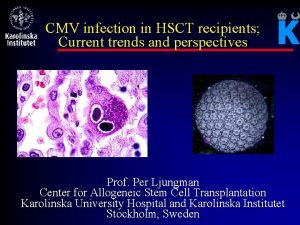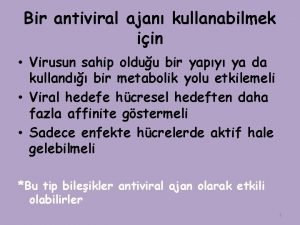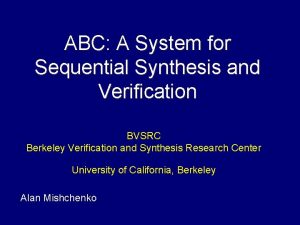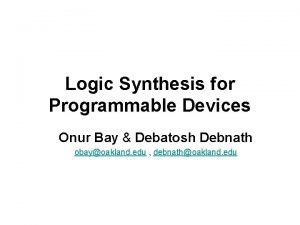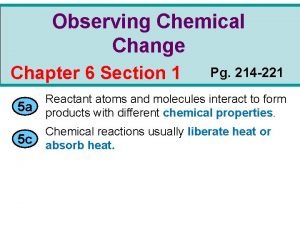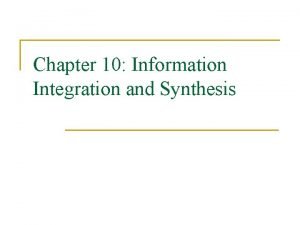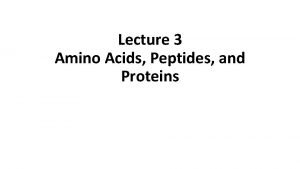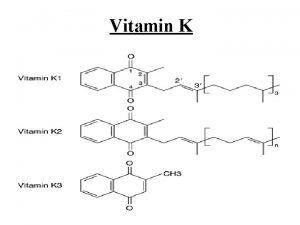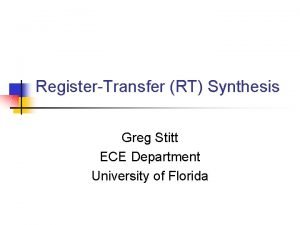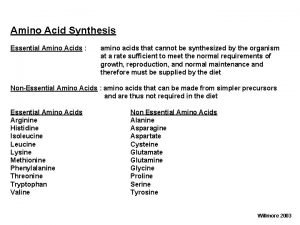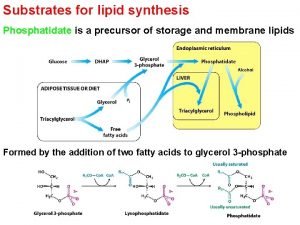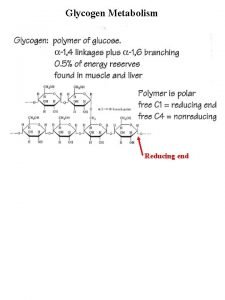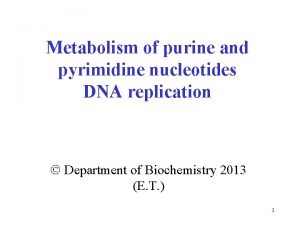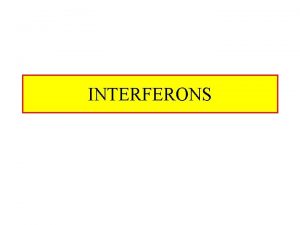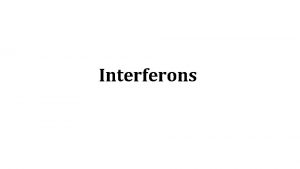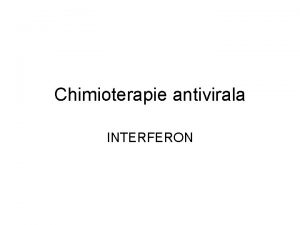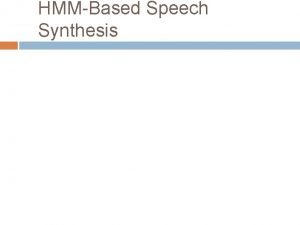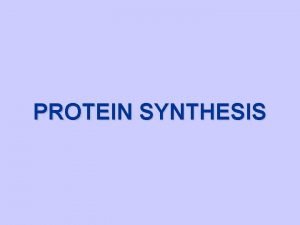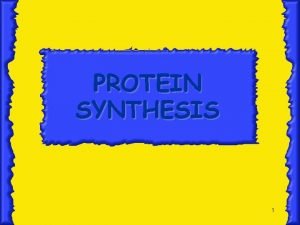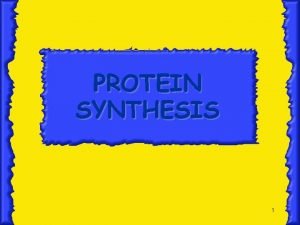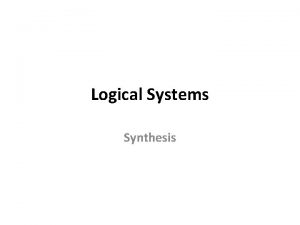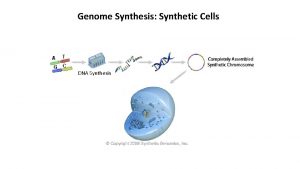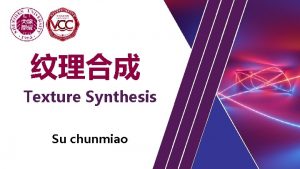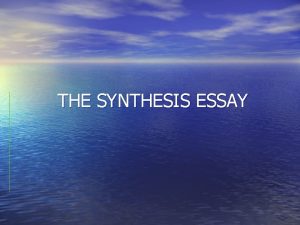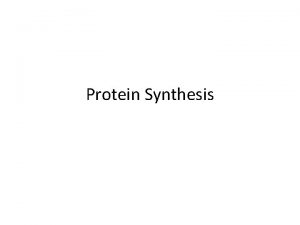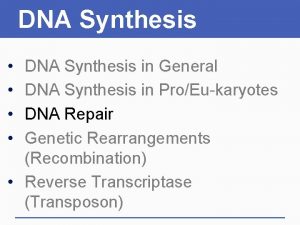Interferons Induction of synthesis Induction of antiviral activity























- Slides: 23

Interferons Induction of synthesis Induction of antiviral activity Antiviral activities induced by interferons a and b Antiviral activities induced by interferons g Viral defenses against interferon responses

Interferons § Interferons Type I interferon: § 165–amino acid glycoproteins with antiviral activity § Stable at p. H 2 § Interferon-: 13 genes in humans, made in leukocytes and other cells § Interferon-: 1 gene in humans, made in fibroblasts and epithelial cells Type II interferon: § 146–amino acid glycoprotein, immune modulator § Labile at p. H 2 § Interferon-g: 1 gene in humans, made in lymphocytes and macrophages

Interferons § Induction of synthesis Induced by virus infection and double-stranded RNA. Interferon regulatory factors (IRF) activated by phosphorylation. IRF bind to interferon genes, activating transcription. Interferon m. RNAs are unstable; short burst of interferon synthesis. Interferons are secreted into the extracellular medium.

Interferons § Induction of antiviral activity Interferons interact with specific receptors on the surface of target cells. Binding leads to dimerization of receptors, phosphorylation and activation of Jak kinases phosphorylate Stat proteins, which dimerize and transit to nucleus. Stat proteins bind to interferon-stimulated genes in nucleus and activate transcription. More than 100 cellular genes are activated by the Jak-Stat pathway.

Interferons § Antiviral activities induced by interferons a and b Mx proteins suppress replication of negativestrand RNA viruses. 2, 5 -oligoadenylate synthetase activates ribonuclease L, which degrades host and viral m. RNAs. Double-stranded RNA-dependent protein kinase (PKR) inactivates protein synthesis by phosphorylating initiation factor 2 a (e. IF-2 a).

Interferons § Antiviral activities induced by interferons g Expression of major histocompatibility protein (MHC) class I promotes development of cytotoxic T cells leading to killing of virus-infected cells. Expression of MHC class II promotes antibody responses against viral proteins. Activation of proteasomes increases immune display of viral peptides. Synthesis of interleukin-2 promotes development of Th 1 cells, leading to cytotoxic response and killing of virus-infected cells. Activation of macrophages leads to killing of microbes via nitric oxide pathway. Switch of B-cell production from immunoglobulin M to immunoglobulin G 2 generates soluble antibodies against virus proteins.

Interferons § Viral defenses against interferon responses Homologues of interferon-regulatory factors block transcription of interferon genes. Viral proteins inhibit activation of interferonstimulated genes. Small viral ds. RNAs block activation of ds. RNAdependent protein kinase (PKR). Viral proteins that bind to ds. RNA reduce activation of PKR. Soluble homologues of cytokine receptors block cytokine production and inhibit B-cell activation and antibody production.

Interferons § Virus-infected cells secrete interferons, which protect nearby cells against virus infection Released from virus-infected cells, binds to receptors on nearby uninfected cells Stimulate transcription of genes encoding proteins with antiviral activities INF induced by one kind of virus can inhibit replication of different virus types Species- dependent § Interferons are a first line of host defense against viruses but therapeutic use has been limited Most effective at initial stage of virus infection Therapeutically administered INF leads side effects and short-lived antiviral effects

Interferons § Interferons a, b, and g are made by different cells and have distinct functions

Interferons § Transcription of interferon genes is activated by virus infection or double-stranded RNA Fig. 31. 1 The interferon system.

Interferons § Transcriptional activation occurs by binding of transcription factors to interferon gene enhancers Fig. 31. 2 Transcriptional activation of the interferon gene.

Interferons

Interferons § Interferon signal transduction is carried out via the Jak-Stat pathway Fig. 31. 3 Interferon signal transduction.

Interferons § Antiviral activities induced by interferon 1. The Mx proteins. 1. Able to hydrolyze GTP, function not known 2. Inhibits viral RNA polymerase activity 2, 5 -oligo(A) synthetase and ribonuclease L. § § § Activated 2, 5 -oligo(A) synthetase produce 2, 5 -oligo(A) binds and activates ribonuclease L Degrades host and viral m. RNAs Double-stranded RNA-dependent protein kinase. § § Activated by ds RNA Phosphorylates e. IF-2 phosphorylation results in inactive complex Block initiation of protein synthesis

Interferons Fig. 31. 4 Antiviral activity directed by 2, 5 -oligo(A) synthetase and ribonuclease L.

Interferons Fig. 31. 5 Mechanism of antiviral activity directed by PKR.

Interferons § Interferons have diverse effects on the immune system § The adaptive immune system Fig. 31. 6 Antibody production by B cells.

Interferons Fig. 31. 7 Generation of helper (Th) and cytotoxic (Tc) T lymphocytes.

Interferons Fig. 31. 8 Cell lysis by cytotoxic T lymphocytes.

Interferons § Interferons stimulate antigen processing and presentation § Interferon and the development of CD 4 positive helper T-cells § The role of interferon in macrophage activation and cellular immunity INFg stimulates macrophage activation § Effects of interferons on antibody production § Interferons regulate cell growth and apoptosis

Interferons § Viruses have developed numerous strategies to evade the interferon response

Interferons § Conclusion: interferons are a first line of defense against virus infection

Key Terms § § § Antibodies Antigens B lymphocytes Caspases Chemokines Complement Cytokines Cytotoxic T lymphocytes Epitopes Interferons Interleukin-1 § § § § Jak-Stat pathway Macrophages Major histocompatibility complex (MHC) proteins Natural killer cells 2, 5 -oligo(A) synthetase PKR (double-stranded RNAdependent protein kinase) Plasma cells Proteasomes Ribonuclease L T-cell receptors T lymphocytes Toll-like receptors Viral interference
 Second antiviral pill
Second antiviral pill Antiviral ajan
Antiviral ajan Bioflix activity dna replication lagging strand synthesis
Bioflix activity dna replication lagging strand synthesis Activity 2 finding the sequence
Activity 2 finding the sequence Activity coefficient
Activity coefficient Activity 2 finding the sequence
Activity 2 finding the sequence Network diagram aoa
Network diagram aoa Activity 2;
Activity 2; Activity 1 introductory activity
Activity 1 introductory activity Reactants, products, and leftovers
Reactants, products, and leftovers Abc logic synthesis
Abc logic synthesis Debatosh debnath
Debatosh debnath Synthesis decomposition
Synthesis decomposition Integration and synthesis
Integration and synthesis Peptide synthesis
Peptide synthesis Real life examples of bloom's taxonomy
Real life examples of bloom's taxonomy Vitamin k synthesis
Vitamin k synthesis Synthesis definition
Synthesis definition Histidine synthesis
Histidine synthesis Triacylglycerol synthesis
Triacylglycerol synthesis Reducing end of glycogen
Reducing end of glycogen Protein synthesis and mutations
Protein synthesis and mutations Purines and pyrimidines
Purines and pyrimidines Chemistry predicting products
Chemistry predicting products
